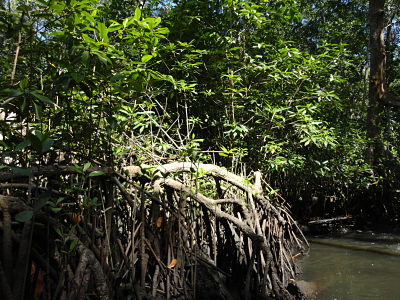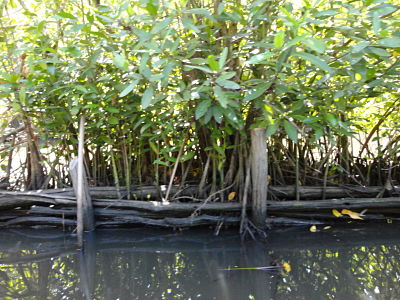


In order for problems of salinity to be solved in perturbed mangrove ecosystems, as well as for fish production and migration to be optimized, it is vital that channels within the mangrove systems are properly cleared and maintained, even if this means cutting some trees. Clear and well-maintained channels permit the hydrological flows between salt- and freshwater sources in a mangrove to find a natural balance, favouring biodiversity. They also permit the movement of fish to and from the ecosystem in rhythm to those flows, as well as facilitating the natural expansion of the mangroves via greater seed dispersal.
- A committed local community workforce which is convinced of the benefits of rehabilitating the mangroves.
- Trained government agencies which know the best ways to rehabilitate mangroves.
- A sustainable programme of payments for temporary work by which the local community can be additionally rewarded for their service to ecosystem maintenance, thus providing additional adaptive economic capacity (see building block III).
- The keys to mangrove rehabilitation are channel restoration and maintenance, leading to improved hydrological network flows.
- Governmental programmes for temporary work payments and subsidies must not be relied upon, only, for generating local support for maintaining the mangrove ecosystems, since the money available for such programmes might not be guaranteed in the medium to long run.
- Rehabilitation and maintenance of mangroves is hard and grueling work – conviction and evidence of the benefits it brings to livelihoods is needed to sustain a community’s commitment to such a task.